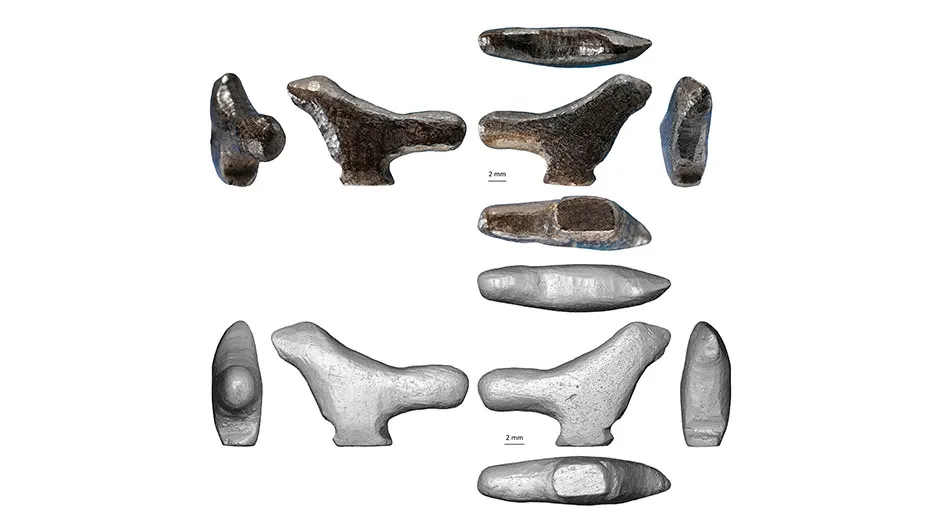A miniature bird statue carved out of burnt bone has been unearthed by archaeologists in Lingjing, China. At over 13,000 years it is believed to be the oldest East Asian work of art ever found.
Humans have been creating sculptures since the Upper Paleolithic period (50,000 to 12,000 years ago), the earliest beinga lion-headed human carved from mammoth tusk found in German caves, dating back 35,000-40,000 years. This bird figurine shows that sculpture was emerging independently in East Asia during the same period
Read more:
- 44,000-year-old cave art depicts earliest-known mythical beasts
- Ancient mammoth bone circle reveals how Ice Age humans lived
- First cave art 10,000 years older than thought
Discovered by a team of archaeologists led by Prof Francesco d’Errico at the University of Bordeaux, France, the 2cm-long bird is incredibly well-preserved, with a short neck, rounded bill and long tail, and a pedestal so that it can stand up.
The sculpture is thought to represent a ‘passerine’ – a diverse group of birds that includes the sparrows, finches and thrushes.

The researchers analysed the bird using microscopy and X-ray scanning, determining that it was carved from a mammal limb bone that had been blackened by heating.
They also painstakingly reconstructed the sculpting process: the bird was created using four different techniques – gouging, abrading, scraping, and incising.
“Our analysis reveals that the Lingjing artist has chosen the appropriate techniques and applied them skillfully to faithfully reproduce the distinct anatomical features of a passerine,” they write.
“The style of this diminutive representation is original and remarkably different from all other known Paleolithic avian figurines.”
The researchers estimate the figurine to be 13,500 years old – more than 8,500 years older than other animal sculptures found in East Asia.
Reader Q&A: What’s the oldest invention that we still use today?
Asked by: Chris McMullon, Barnham, West Sussex
We tend to think of ‘inventions’ as problem-solving ideas dreamt up by humans. But there’s evidence that we’re still benefiting from inventions consciously made by pre-human species.
Certain types of crow have proved capable of making simple tools like hooks, and are suspected to have done so for several million years, long before we arrived on the scene. Meanwhile, great apes – which include chimpanzees, gorillas and ourselves – are unique in creating a safe place to sleep each day, suggesting that beds and bed-making date back even further.
Read more:
